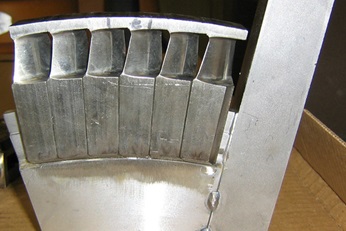Brochures
-
Gas Turbine Rotor Life AssessmentpdfLanguages:
-
W501F / SGT6 - 5000F RepairpdfLanguages:

Laser welding uses a converging beam of laser radiation to create a spot of high-energy density. This spot can melt superalloys and fuse materials. The spot size is small and high cooling rates can be achieved. Although laser welding machines use only moderate amounts of power (2 kW is a normal value), it can offer high welding speeds.
Laser welding is typically used for:
Talk or write to our experts to find your best solution.